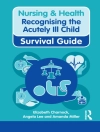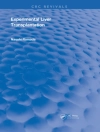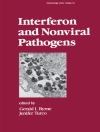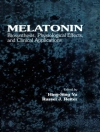Using SWOT analysis, this book examines in detail the strengths and weaknesses of the hybrid modalities PET-CT and PET-MRI for imaging of the central nervous system, comparing their merits and evaluating their advantages over the stand-alone modalities. The aim is to employ a truly systematic approach in order to define the potential clinical benefit of these modalities and to identify shortcomings, opportunities, and threats. Clinical application of the modalities is explored in a range of conditions, including dementia and related disorders, movement disorders, psychiatric disorders, cerebrovascular disease, infection/inflammation, brain tumors, and pediatric neurologic disorders. In addition, the basics of hybrid imaging are addressed, covering physics, instrumentation, data analysis and quantitation, radiopharmaceuticals, and contrast media. PET-CT and PET-MRI in Neurology, written by experts from Europe and the United States, will be essential reading for imaging specialists and of value for neurologists, psychiatrists, neurosurgeons, and pediatricians.
Innehållsförteckning
Preface.- Foreword.- Part 1-Basics.- Physics Of Hybrid Imaging.- Instrumentation.- Quantitation And Data Analysis In Hybrid PET/MRI Systems.- Radiopharmaceuticals.- Contrast Media.- Part 2-Most Frequent Clinical Applications.- FDG-PET in Dementia.- Amyloid imaging in dementia and related disorders.- Movement disorders: focus on Parkinson´s disease and related disorders.- Psychiatric disorders.- PET/CT and PET/MRI in Neurology: Infection/Inflammation.- Brain Tumors.- Hybrid Imaging in Pediatric Central Nervous System Disorders.- Part 3-Most Frequent Clinical Applications.- Multimodality Imaging of Huntington’s Disease.- Neuroimaging in Amyotrophic Lateral Sclerosis.- Hybrid imaging in vegetative state.- Hybrid imaging in cerebrovascular disease.- Hybrid imaging in Emergency Room.- Part 4-SWOT analysis.- SWOT Analysis and Stakeholder Engagement for Comparative Evaluation of Hybrid Molecular Imaging Modalities.- Worldwide Challenges and Opportunities of Hybrid Imaging: Perspective from the International Atomic Energy Agency (IAEA).- PET/CT vs PET/MRI.
Om författaren
Andrea Ciarmiello, who is board certified in both Radiology and Nuclear Medicine, is Professor and Director of the Imaging Department at S. Andrea Hospital, La Spezia, Italy. Professor Ciarmiello is Editor in Chief of the Journal of Diagnostic Imaging in Therapy, Associate Editor of Current Radiopharmaceuticals, and an editorial board member of the European Journal of Nuclear Medicine and Molecular Imaging and The Scientific World Journal. He is a member of the European Association of Nuclear Medicine (EANM) and the Italian Association of Nuclear Medicine and Molecular Imaging (AIMN). He has published 153 papers in the field.
Luigi Mansi is Full Professor of Diagnostic Imaging and Head and Chair of Nuclear Medicine at the Second University of Naples, Napoli, Italy – positions he has held since 2002. Professor Mansi was Deputy Dean of the European School of Nuclear Medicine from 2001 to 2014 and Task Group Coordinator of the Italian Association of Nuclear Medicine and Molecular Imaging (AIMN) from 2005 to 2011. He has chaired or spoken at numerous national and international meetings, consensus conferences, and workshops and has been a member of national and international scientific committees and executive committees in scientific societies. He is the author of more than 400 papers, including 140 in journals indexed in Pub Med. Professor Mansi was Editor of the Notiziario di Medicina Nucleare, official organ of the AIMN, from 2005 to 2011 and is Co-Editor in Chief of both Current Radiopharmaceuticals and the Journal of Diagnostic Imaging in Therapy.












